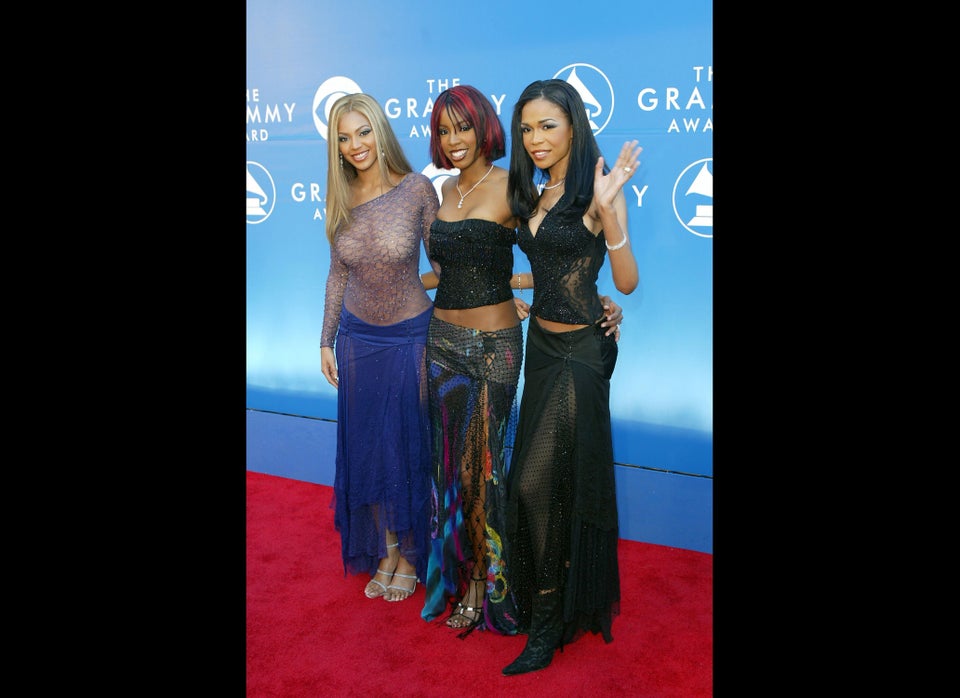If the age of social media has taught us anything, it’s to fear the photograph. Photos trigger what researcher Hanna Krasnova, in a pioneering study of Facebook, coined the “envy spiral.” Like true addicts, we share and gawk at images of fabulous lives, trips, faces, even as the science shows it’s only making us sadder.
A curious new genre bucks this rule though: videos of people posing for pictures. These digital hybrids have the opposite effect of the slick portrait. Caught in the act of self-mythologizing, the subject transforms. He might look vulnerable, silly, lovable, cruel. Endowed with fallibility, our would-be object of envy, holding that sexy face far too long, becomes human.
Arguably no video proves the medium's power to subvert its cousin, the photo, more than the one above. Leaked last week, the footage shows Beyoncé getting her picture taken. Posted by a fan to Instagram, the video was shot at an event for Jay Z’s streaming audio service, Tidal. Draped in a plum-hued gown, hair slicked into a ponytail, Beyoncé was in superstar mode for her husband's big night.
If all had gone to plan, that’s the only way we would have seen her. But at the video’s start, a woman in black -- identified by Time as Beyoncé's assistant Sam Greenberg -- fidgets with her boss’s dress. In the flash of camera light Beyoncé seems to whisper through a broad smile for Greenberg to “stop it.” The slip was enough to launch the video into viral ubiquity, turning tech writers, culture writers and your Facebook friends into armchair behaviorists, weighing in on what the rare flash of emotion means about the cryptic superstar.
Lost in the chatter is a simpler revelation: the difference between this video and photos of the same event. Unlike in the glossy stills spawned from the red carpet session, Beyoncé doesn't look superhuman here; she's working. The seams of real life show: how flustered she is, how strenuous her smile. Turns out in real time, no one actually wakes up like this.
How could the effects of the twin records diverge so much? Krasnova, the Facebook researcher, says the answer lies in the structural difference between video and photo, a myth-making medium Beyoncé has perfected. Videos remove the allure social media addicts know too well, Krasnova says, because “we get more cues.”
“The problem with any kind of digital media is that it’s not as rich as [an experience] offline,” she says. “When we meet somebody offline we see a whole bunch of cues: how the person looks, how he behaves, how he talks, all these kind of things -- and then we can make an assessment.”
In other words, videos capture human beings. Photos, those soul-grabbers of old, freeze us into symbols. In the right light and clothing, an ordinary teen with a squeaky voice and gawky gait can look ethereal, even alien. A miserable person can look happy. The more we tap our way down our Instagram feed, the more its simulacrums change how we view living, breathing humans.
The case of Beyoncé, more than practically anyone, bears out the envy-triggering potential of visuals. The world's most popular singer is remarkably silent. Her Instagram and Tumblr accounts bristle with Vogue-quality images promoting her life as a brand: glamorous, earthy, out of the reach of most people. Meanwhile, as her star has grown, her speech has dwindled. A Beyoncé interview is a carefully managed affair, spaced years from the last. Even her self-produced HBO documentary, stocked with a slice of the endless cache of video she is rumored to record compulsively, struck critics as stilted and choreographed, a perceived sign of her discomfort with the slippery flow of life. Milliseconds, captured for posterity on film, can't be stage managed.
Krasnova says researchers haven’t yet contrasted the grip of the two mediums on the psyche of social media users. Her sense is that videos -- accidental or not -- undermine myth-making more than photos, “simply because you expose yourself more” in footage.
When the footage is of people posing for photographs, that subversiveness accelerates. The juxtaposition of the two forms of capture exaggerates each of their powers: the photograph's to mythologize its subjects, the video's to humanize.
This intersection stokes our baser instincts. We enjoy seeing vanity punished. Recall the group of sportscasters chastised for mocking sorority girls caught on camera in the stands taking selfies. Or the rogue video of partiers at an electronic dance music concert who thought they were posing for photographs. Both instances trended, a kind of neat public humiliation for camera-seekers in which the tool of their desire becomes a mode of punishment.
These gleeful responses deny our own fallibility. Better to deploy our powers of observation judiciously, as an exit route from the envy spiral toward empathy. Next time you see an Instagram picture too good to be true, imagine the process that led to it. The posing, the clicking through filters, a laborious caption editing process. You might discover that you can relate.
Also on HuffPost:

